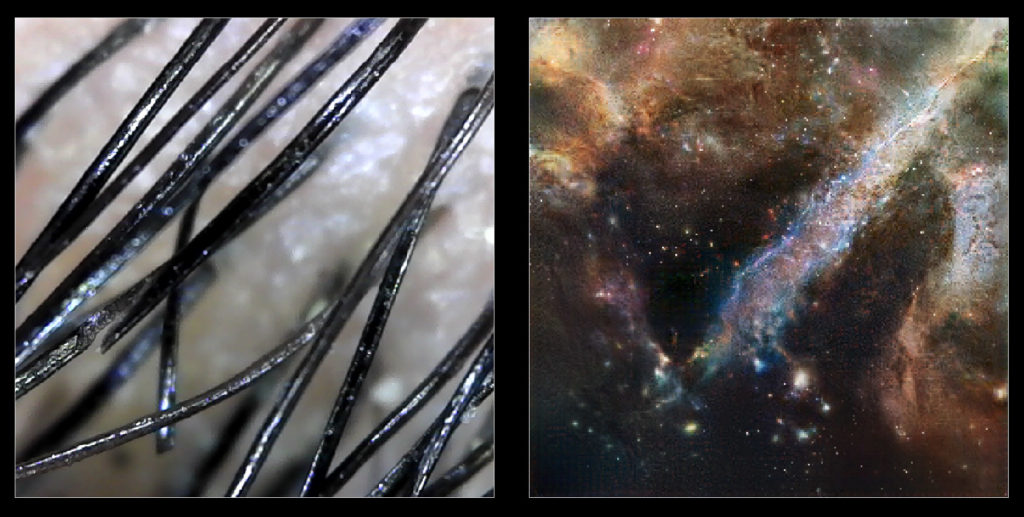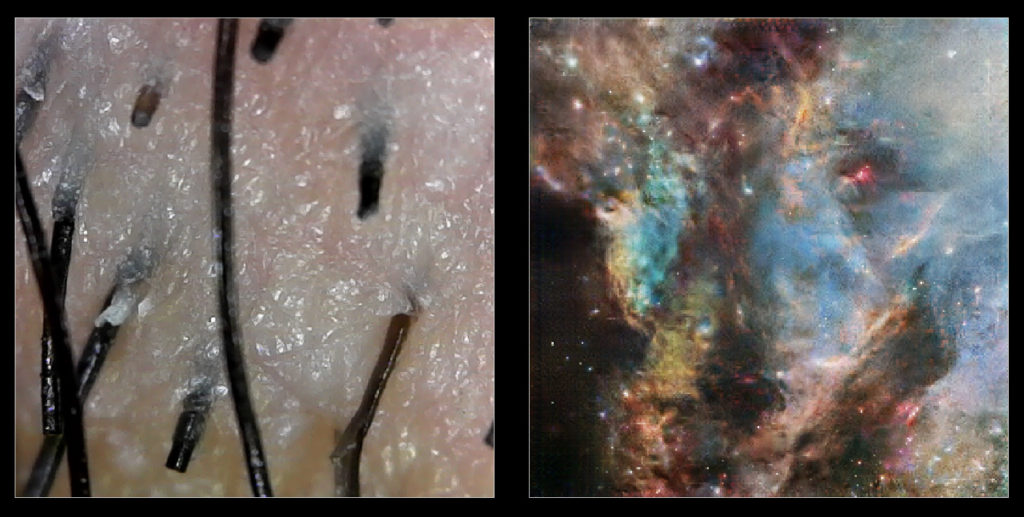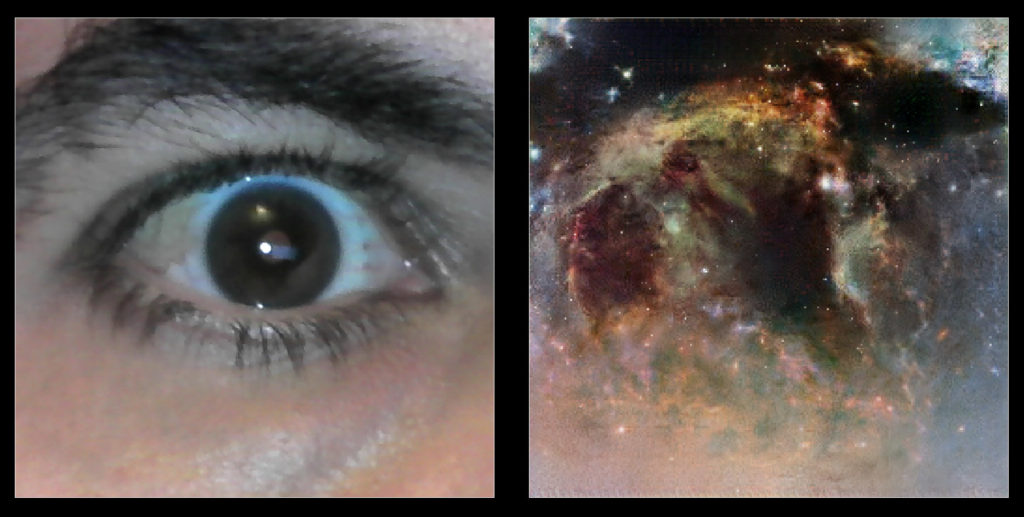In this edition, this particular neural network is trained on thousands of images from the Hubble Space Telescope. On thousands of images from beyond our planet, from distance space, the cosmos, the fifth element, the aether, the home of God.
We might be tempted to think that this network has learnt what distance space looks like. But of course, that’s not entirely accurate. The Hubble Space Telescope doesn’t give us these perfectly captured photographs, as objective visual representations of outer space. Rather, it streams data, numbers. And then those numbers are interpreted, by us, humans, by engineers, by scientists, even by artists. We stitch together patches, composite layers, and we even add colours. We don’t know what distant space actually looks like. I don’t even know if that is a valid proposition, if we can even fathom those kinds of scales – hundreds of thousands of light years in diameter. This neural network isn’t learning what distant space looks like. It’s learning what we think distant space should look like, tainted with our assumptions, our biases, our romantic visions.
And speaking of romantic visions, there is another motivation behind this particular dataset and series of works.
The network that renders us capable – as Donna Haraway puts it – spans many scales of space and time. At one end we can think of the trillions of non-human cells of our micro-biome, enabling our bodies to function. At another scale, we can think of the air that we breath, the oxygen molecules emitted by photosynthesizing organisms like cyanobacteria and plants. And they use nutrients from the soil, operating on a whole other timescale. This entire network of life support, is like a delicate, inter-species, inter-dimensional hyper-object ballet.
To quote Haraway “Shaping response-abilities, things and living beings can be inside and outside human and nonhuman bodies, at different scales of time and space. All together the players evoke, trigger, and call forth what—and who—exists. Together, becoming-with and rendering-capable, invent n-dimensional niche space and its inhabitants”.
And the energy required for this transformation, that fuels all of life – at least near the surface of our planet – comes to us as photons, born in the heart of the sun millions of years ago, as hydrogen nuclei fuse together, forming helium. And the heavier atoms that make up my body, and yours, and in fact everything around us, were forged in the dying hearts of stars and supernova, billions of years ago, billions of light years away, before they were spewed across galaxies to temporarily come together – for a very brief moment in time – to become you and me.
To quote the astrophysist Neil degrasse Tyson “We are all connected. To each other, biologically. To the earth, chemically. To the rest of the universe atomically”.
And somehow, some of this matter is arranged in a very particular configuration, such that it forms systems that exhibit a type of behavior that we humans have labelled ‘Life’.
To quote Carl Sagan: “The beauty of a living thing is not the atoms that go into it, but the way those atoms are put together”
Furthermore, some of these systems appear to have a property which we refer to as a conscious self.
To quote Sagan again: “The cosmos is within us. We are made of star-stuff. We are a way for the universe to know itself.”
—
Soundtrack: “Blade Runner End Titles” by Vangelis




